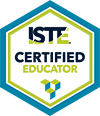



The purpose of this session is to provide attendees with strategies for developing their skills as digitally fluent leaders, particularly in organizations committed to inclusion and belonging for all stakeholders. We'll discuss the distinction between being a digitally literate leader and being a digitally fluent leader and why that distinction matters. We'll explore a variety of approaches and technology tools (e.g., Loom, Flip, Airtable, Zoom) that facilitate digital collaboration and ethical practices. At the end of the session, participants will also contribute to a shared collection of resources on digitally fluent leadership on Wakelet.
Session Objectives:
Participants will...
distinguish between digital literacy and digital fluency in terms of organizational leadership
reflect on the value and importance of inclusion and belonging in one's organization
examine strategies for implementing ethical digital practices that contribute to the organization's mission
explore tools that facilitate digital fluency practices
1) Presenter introductions and introduction to the session (5 minutes)
2) Explaining the "why" of the session focus (Mentimeter backchannel to gauge participant experience with the topic) (5 minutes)
3) Discuss distinction between Digital literacy and Digital Fluency and why this is important to the session objectives (5 minutes)
4) Promoting Belonging and Inclusion through Technology. Presenters will share methods and strategies for advancing the organization's mission using technology and viewed through the lens of ethics, inclusion, and available resources. (15 minutes)
5) Maintaining Digital Fluency. Presenters will facilitate a discussion with attendees on challenges, limitations, and solutions, also viewed through the lens of ethics, inclusion, and available resources. (10 minutes)
6) Curating. Participants will collaboratively curate resources related to this session topic on a shared Wakelet page. During this time, the presenters will also facilitate peer to peer discussions among attendees. (10 minutes)
7) Questions & Closing. Final thoughts will be shared by presenters and attendees will be asked to share their insights and takeaways through a Mentimeter backchannel. (5 minutes)
Anak Agung Sagung, M. A., & Sri Darma, G. (2020). Revealing the digital leadership spurs in 4.0 industrial revolution. Asri, AASMAN, & Darma, GS, Revealing the digital leadership spurs in, 4, 93-100.
Kozioł-Nadolna, K. (2020). The role of a leader in stimulating innovation in an organization. Administrative Sciences, 10(3), 59.
Maslin-Ostrowski, P., & Drago-Severson, E. (2014). Leading and learning in the digital age: Framing and understanding school leader challenges. In Handbook of research on education and technology in a changing society (pp. 651-664). IGI Global.
Nurabadi, A., Suhariadi, F., Mardiyanta, A., Triwiyanto, T., & Adha, M. A. (2022). Digital principal instructional leadership in new normal era. International Journal of Evaluation and Research in Education, 11(3), 1090-1098.
Petrucci, T., & Rivera, M. (2018). Leading growth through the digital leader. Journal of Leadership Studies, 12(3), 53-56.
Ribble, M., & Park, M. (2022). The digital citizenship handbook for school leaders: Fostering positive interactions online. International Society for Technology in Education.
Richardson, J. W., Flora, K., & Bathon, J. (2013). Fostering a School Technology Vision in School Leader. International Journal of Educational Leadership Preparation, 8(1), 144-160.